Elevation: 10,220 ft
Prominence: 600
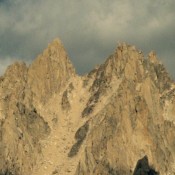
Climbing and access information for this peak is on Pages 171-173 of the book. The only route on this page is the Stur Chimney. Updated September 2019
Mount Heyburn is, perhaps, the most visible of all the Sawtooth Range peaks. It towers over Redfish Lake and immediately draws the interest of both climbers and photographers. All of the routes leading to its summit are technical, and access to any of the routes is a strenuous undertaking. USGS Mount Cramer
Mount Heyburn’s Stur Chimney is, in my opinion, the most “classic” Idaho and Sawtooth climbing route you can ever hope to find. It combines a beautiful approach with a two-pitch climb on solid granite. The chimney is a textbook example of an alpine chimney. The route was pioneered by Sawtooth legend, Luis Stur. If you desire to be a complete Idaho climber, climb this route (Grade II, 5.2).
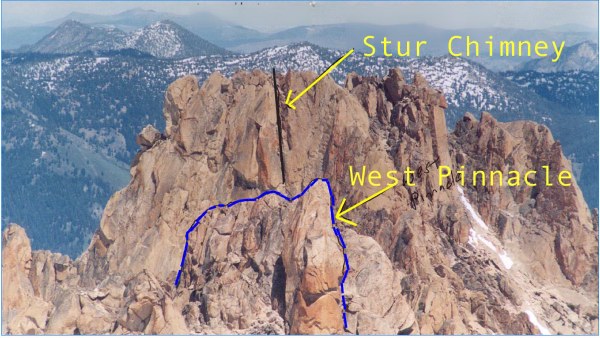
The West Face of Mount Heyburn as viewed from Braxon Peak, with the West Pinnacle in the foreground.
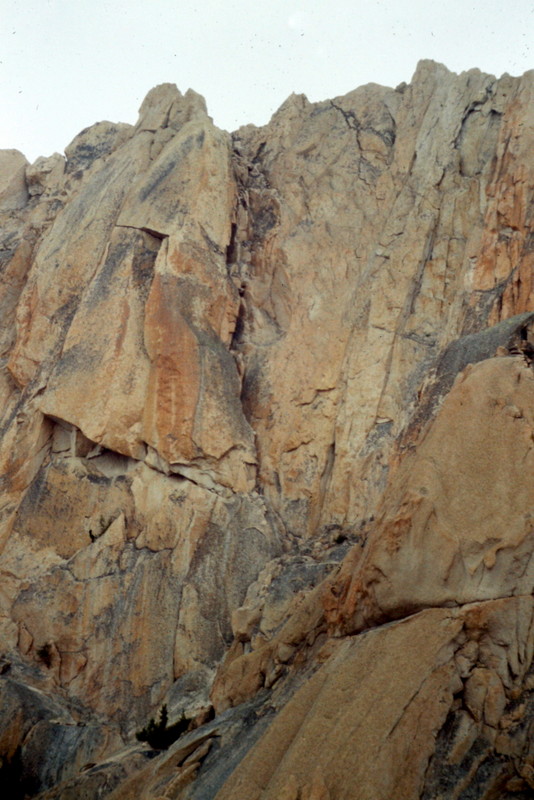
A closer view of the Stur Chimney from the base of the slabs that lead up to it.
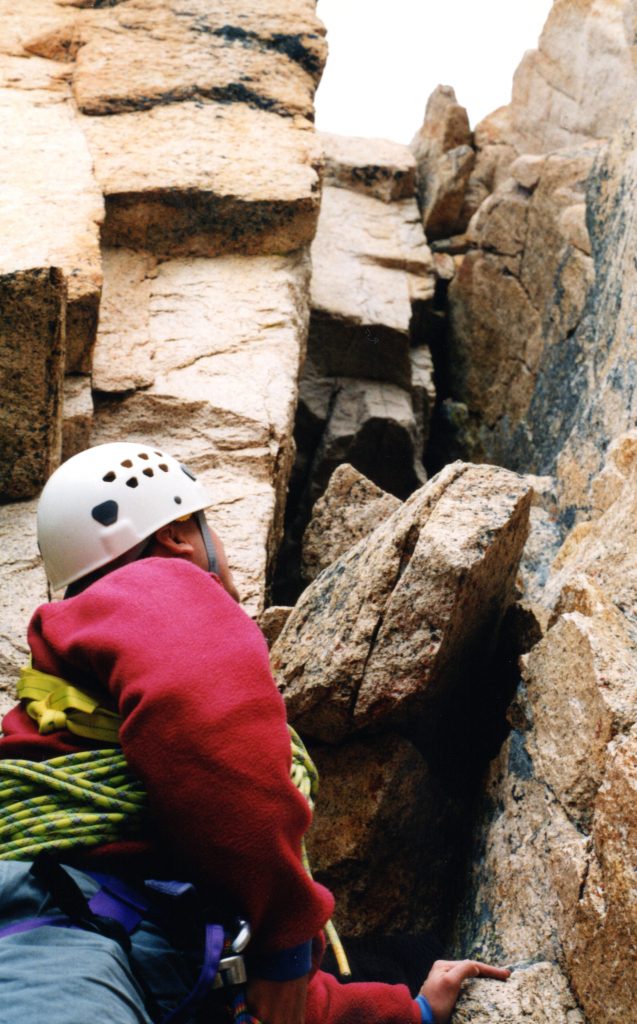
The base of the chimney.
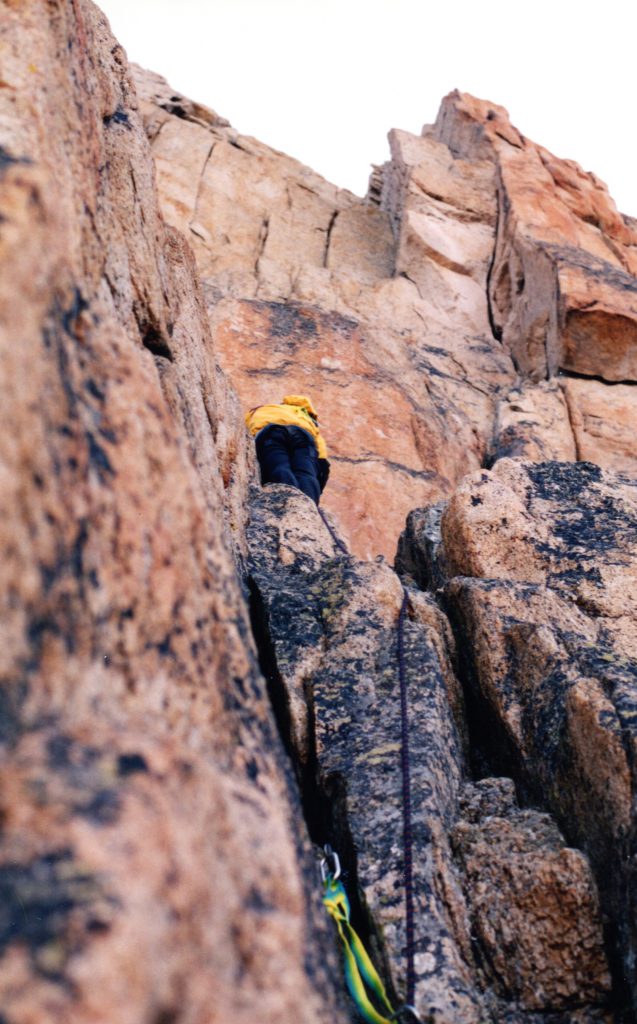
Although there is a lot of disagreement about the correct rating for the Stur Chimney, it is a route that is easy to protect and is not difficult Class 5 climbing.
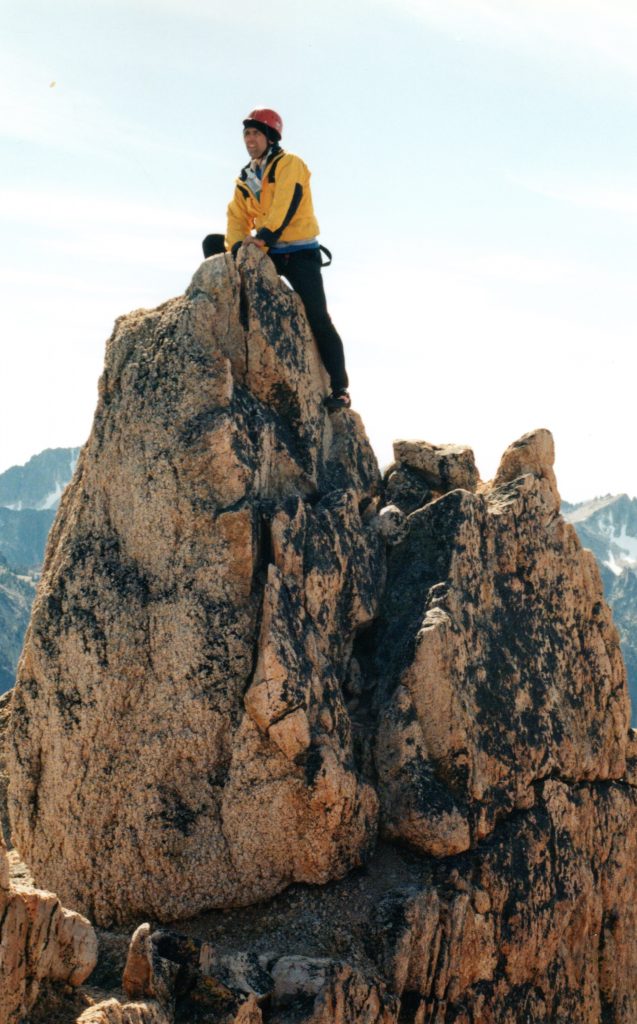
The summit of Mount Heyburn.
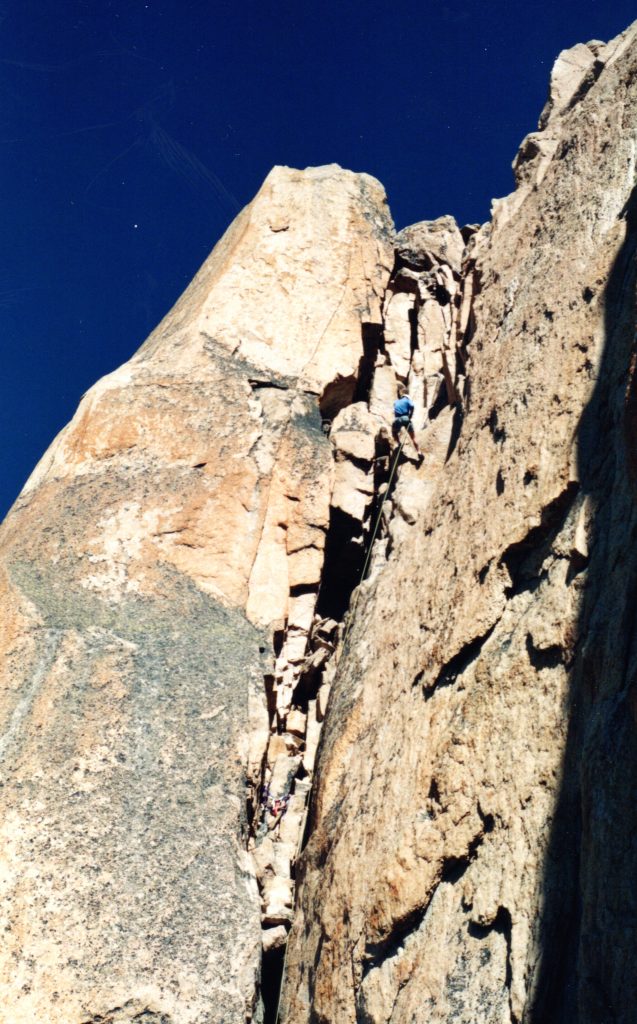
Rappelling midway down the route.
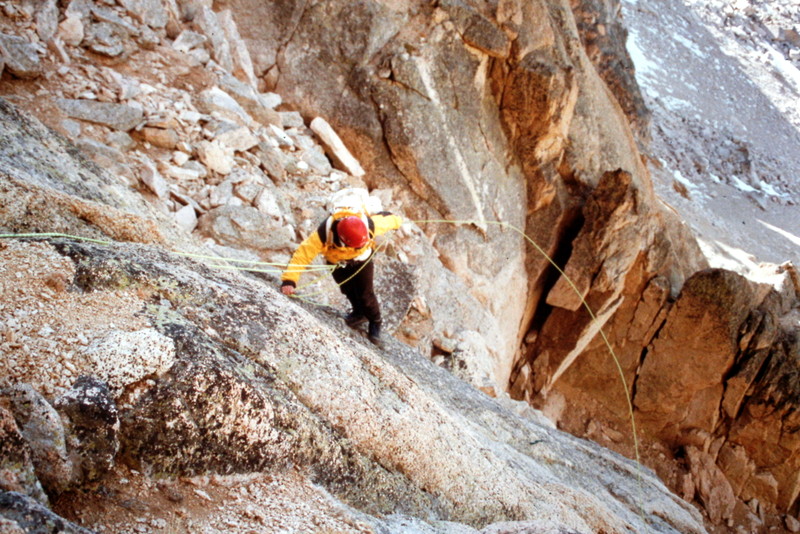
Rappelling down the slabs. This shot gives a feeling for the slabs that lead up to the Stur Chimney.
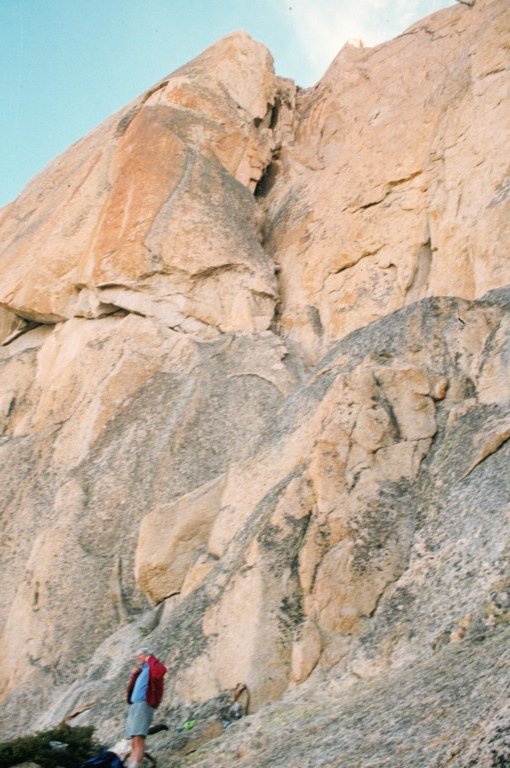
The Stur Chimney.

Mount Heyburn as viewed from a point above Saddleback Lakes.
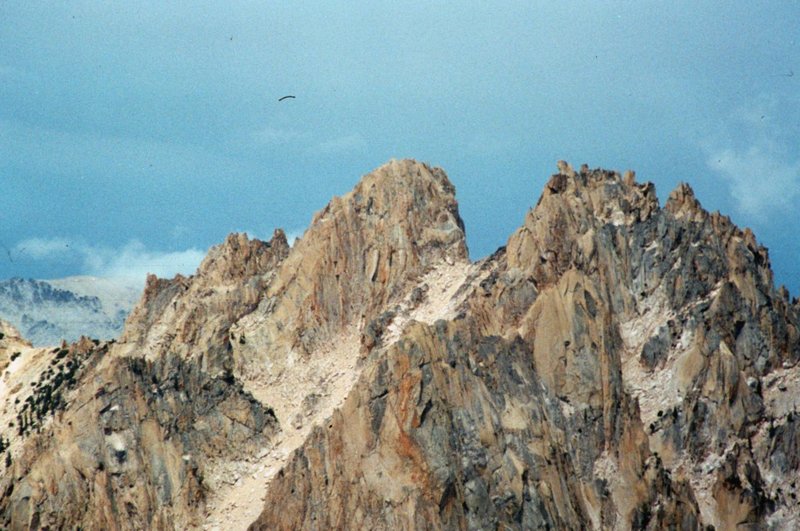
Mount Heyburn as viewed from the Grand Mogul.
Heyburn’s West Summit is known as the West Pinnacle and is a Class 6 problem. The first ascent dates back to 1948 when R. Widrig, J. Hieb, W. Grande and G. Mathews climbed the Tunnel Route which they rated III, Class 6. I do not think that there has been any significant activity on it since that time.
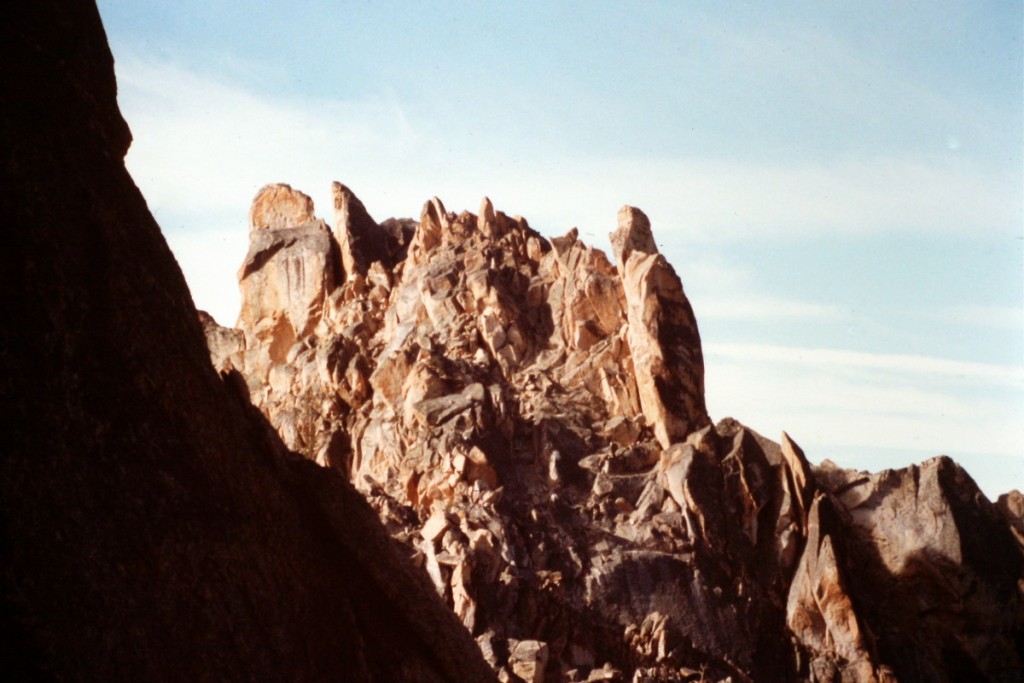
The West Pinnacle as viewed from Mount Heyburn.
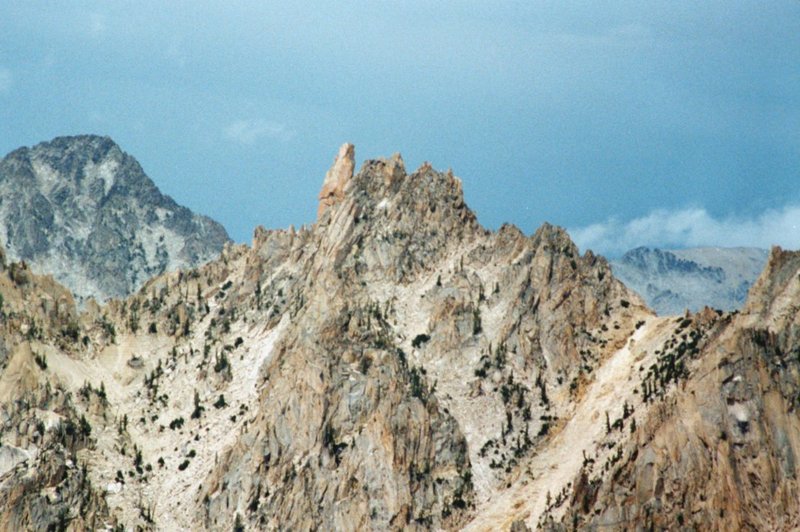
The West Pinnacle of Mount Heyburn as viewed from the Grand Mogul.
A Few More Photos.
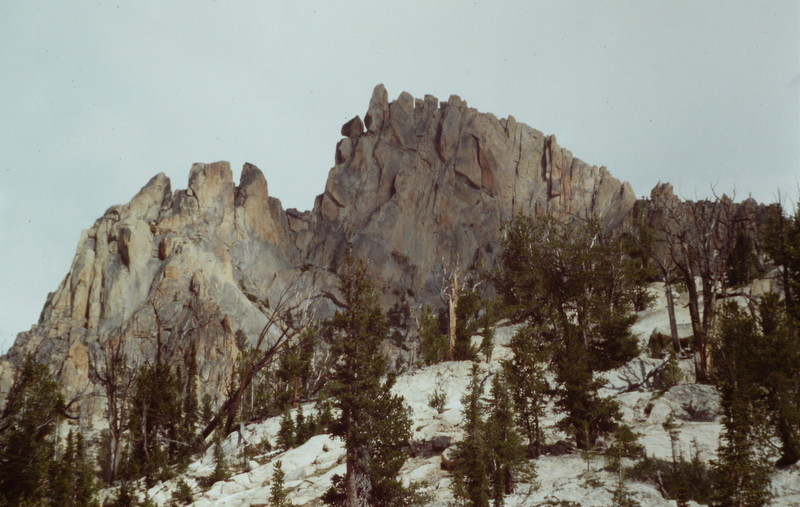
A view of some of the terrain on the northwest side of Heyburn.
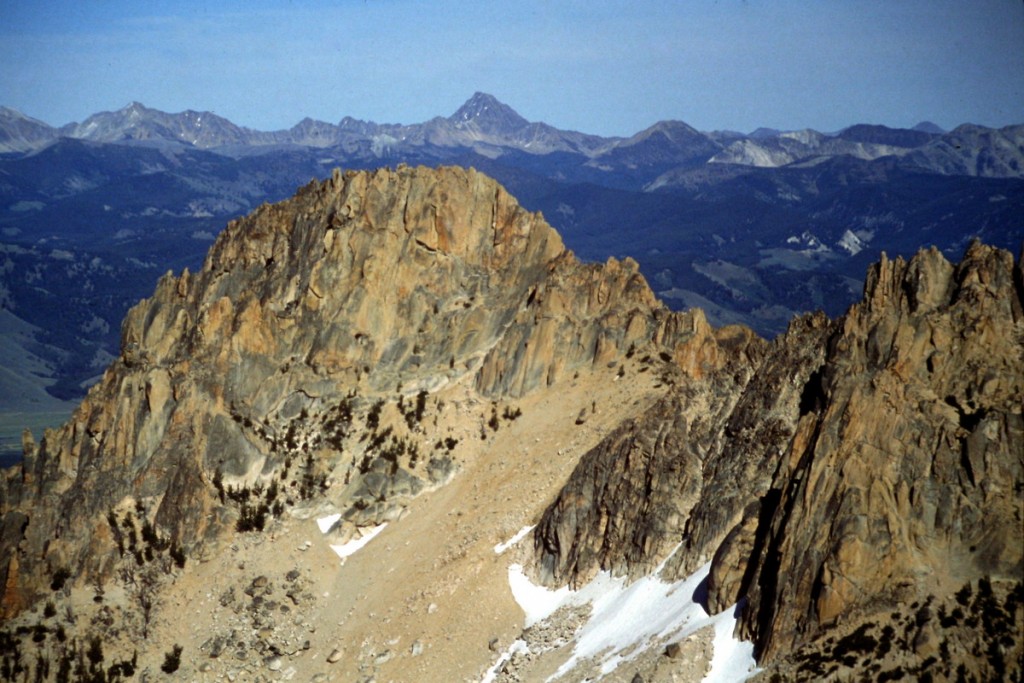
Mount Heyburn as viewed from Braxon Peak.

Mount Heyburn as viewed from Mount Iowa.
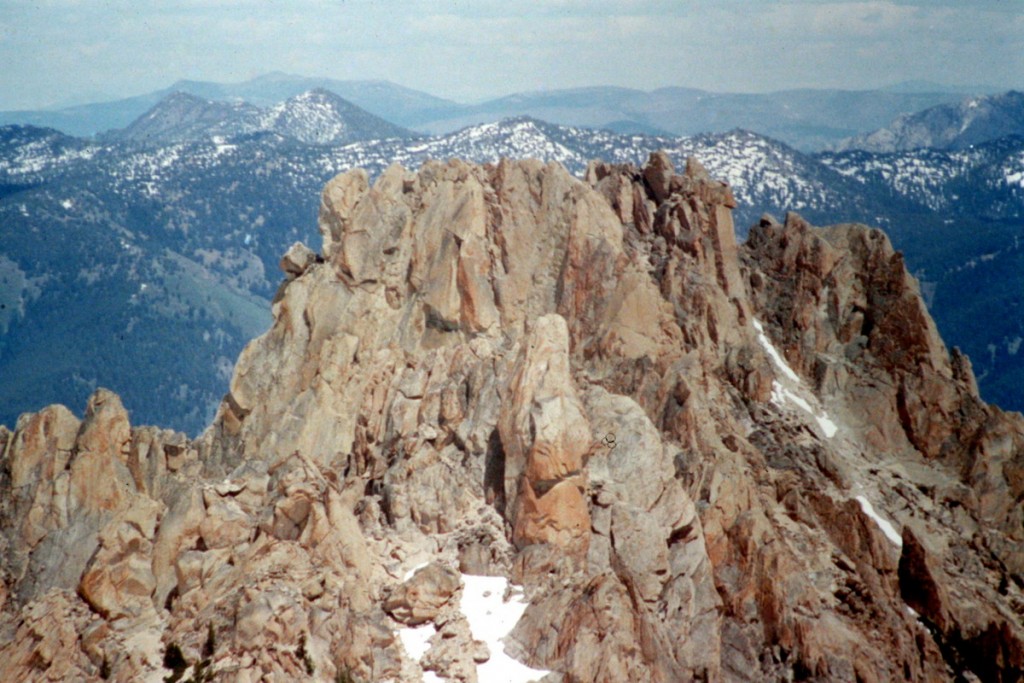
Mount Heyburn as viewed from Braxon Peak without the route line.
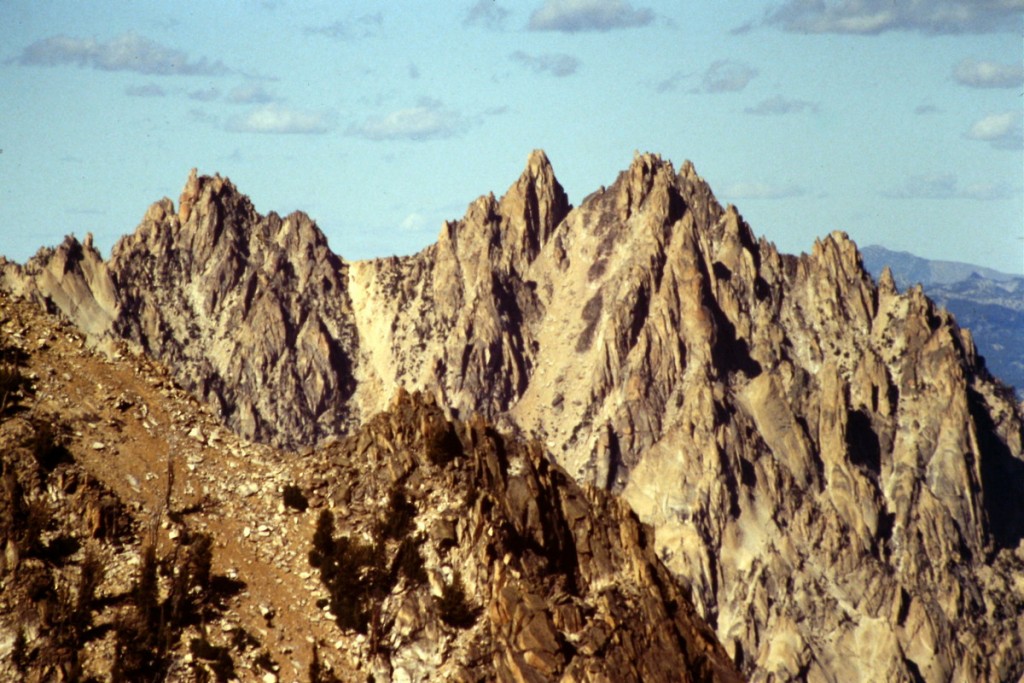
Mount Heyburn as viewed from the south. The West Pinnacle is on the left. The true summit is the pointed summit to its right and the East Summit is on the far right.
Additional Resources
Regions: Heyburn Divide->Sawtooth Range->WESTERN IDAHO
Mountain Range: Sawtooth Range
Year Climbed: 1996
First Ascent Information:
- First Ascent Year: 1935
- Season: Summer
- Route: Southwest Ridge
- Party: Robert Underhill, Miriam Underhill and Dave Williams
- Other First Ascent: Stur Chimney
- Year: 1958
- Season: Spring
- Party: Fred Beckey, Jerry Fuller and Jim Ball.
- Other First Ascent: First Winter ascent. Northwest Ridge.
- Year: 1974
- Season: Winter
- Party: Jacques Bordeleau, Gordon Williams, Chris Puchner, Mark Sheehan and Joe Saviers
- Other First Ascent: East Face / Snow Couloir
- Year: 1947
- Season: Summer
- Party: Iowa Mountaineers: E. Carter, C. Fisher, B. Merriam and C. Wilcox
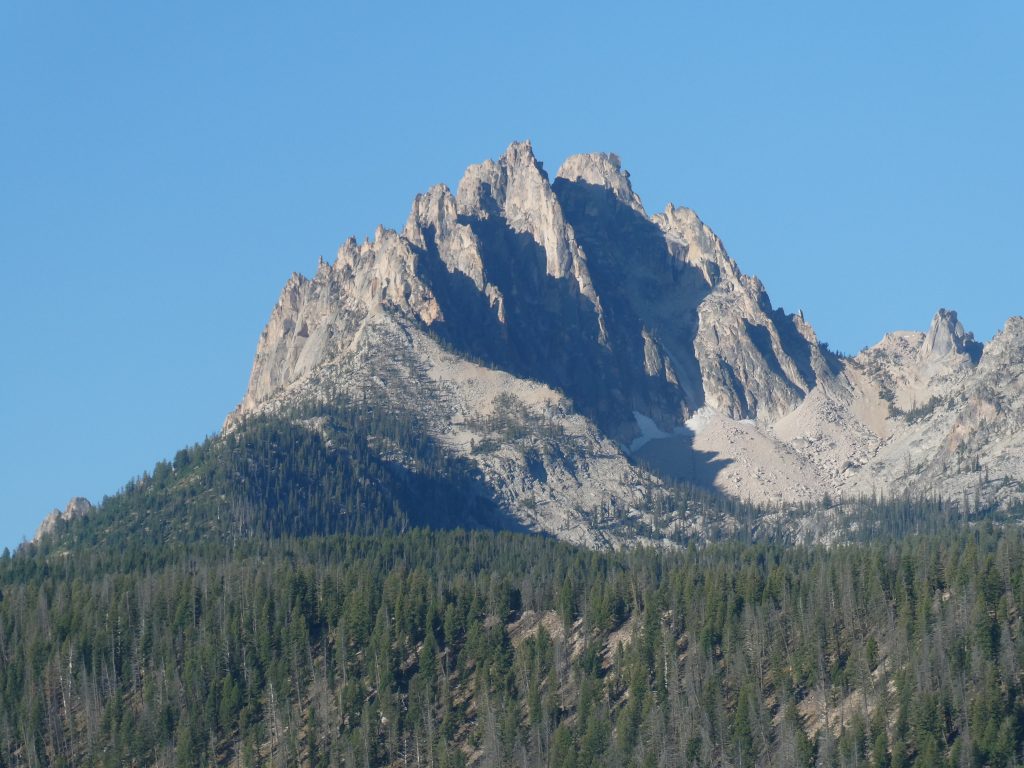
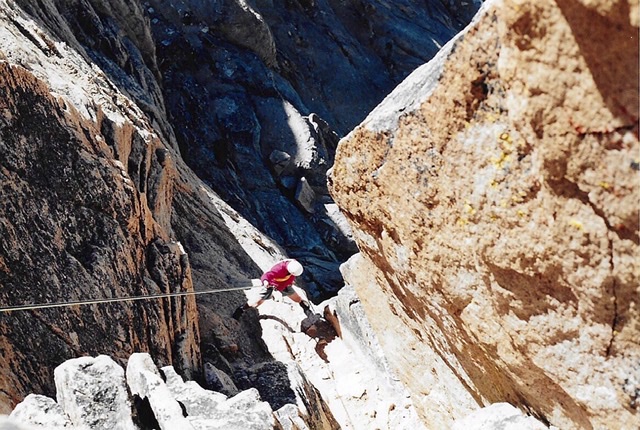
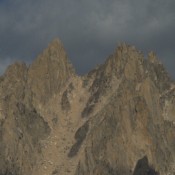
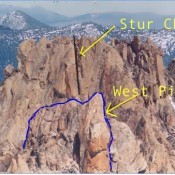
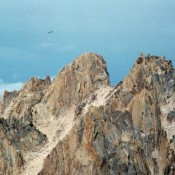
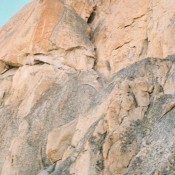
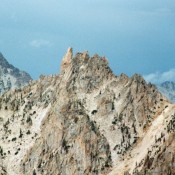
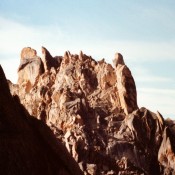
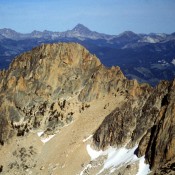
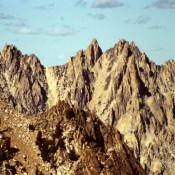
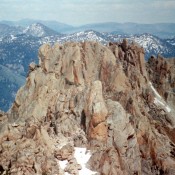
Pingback: FIFTY YEARS OF SAWTOOTH CLIMBING 1934-1984 By Dave Bingham - IDAHO: A Climbing Guide